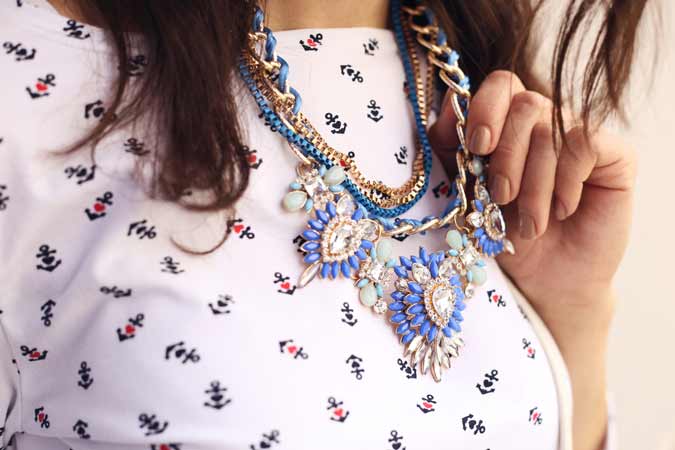The New York Institute of Art and Design offers an online jewelry design course and because we do, we like to provide free tips for aspiring designers. Enjoy!

In the field of jewelry design, many aspiring professionals struggle to bridge the gap between hobbyist and legitimate designer. In making said transition, one of the most common issues faced by many students of ours, both current and past, involves a hesitation in determining appropriate prices at which to list the pieces they’ve made. If you ever find yourself at this crossroads along the trajectory of your career, here are some things to keep in mind:
1. Factor in supply cost. Always make sure to keep track of how much you’re spending on your supplies. If you can, narrow down that overall price spent in total and try to determine the cost of individual materials as exactly as you can. That way, it will be simpler to estimate cost of manufacture each time you take some supplies from your stock to make an individual piece of jewelry.
2. Remember to cover overhead. Will you be working in a rented space or paying for your own store? As accurately as possible, try to determine how much money you’d like to make on each piece of listed jewelry for sale in your store in an effort to establish a contribution to that rent and logistical overhead.
3. Value your time. This is something many designers often forget or sacrifice when they’re first getting started, but it’s important not to. Always establish a rate at which you plan to charge buyers for your work based on actual time you spent creating it. If it helps, determine an hourly rate that you think your labor should be worth, and keep track of that while you’re designing and producing something new to sell.
These are three points of cost that should absolutely always be covered in the final price of the pieces you sell. That being said, simply naming a number that accommodates the cost of those three entities would imply that the item isn’t worth more than the exact cost of production, which would essentially defeat the effort. After factoring and adding those things together, consider other influences such as customer demographic. Who are you planning to market this piece of jewelry too? Where will you be selling it? If it’s going to be sold in a store, how much do accessories cost in similar stores nearby? After analyzing these elements, determine a price reasonably higher than the covered cost of the aforementioned 3. This will help ensure that your work seamlessly fits in with local competition, while still offering you a profitable reward for the time you spent creating it.
Want to learn more? The New York Institute of Art and Design offers an online jewelry design course that can teach you how to create and sell your own unique line of jewelry. Request your free course catalog today!







